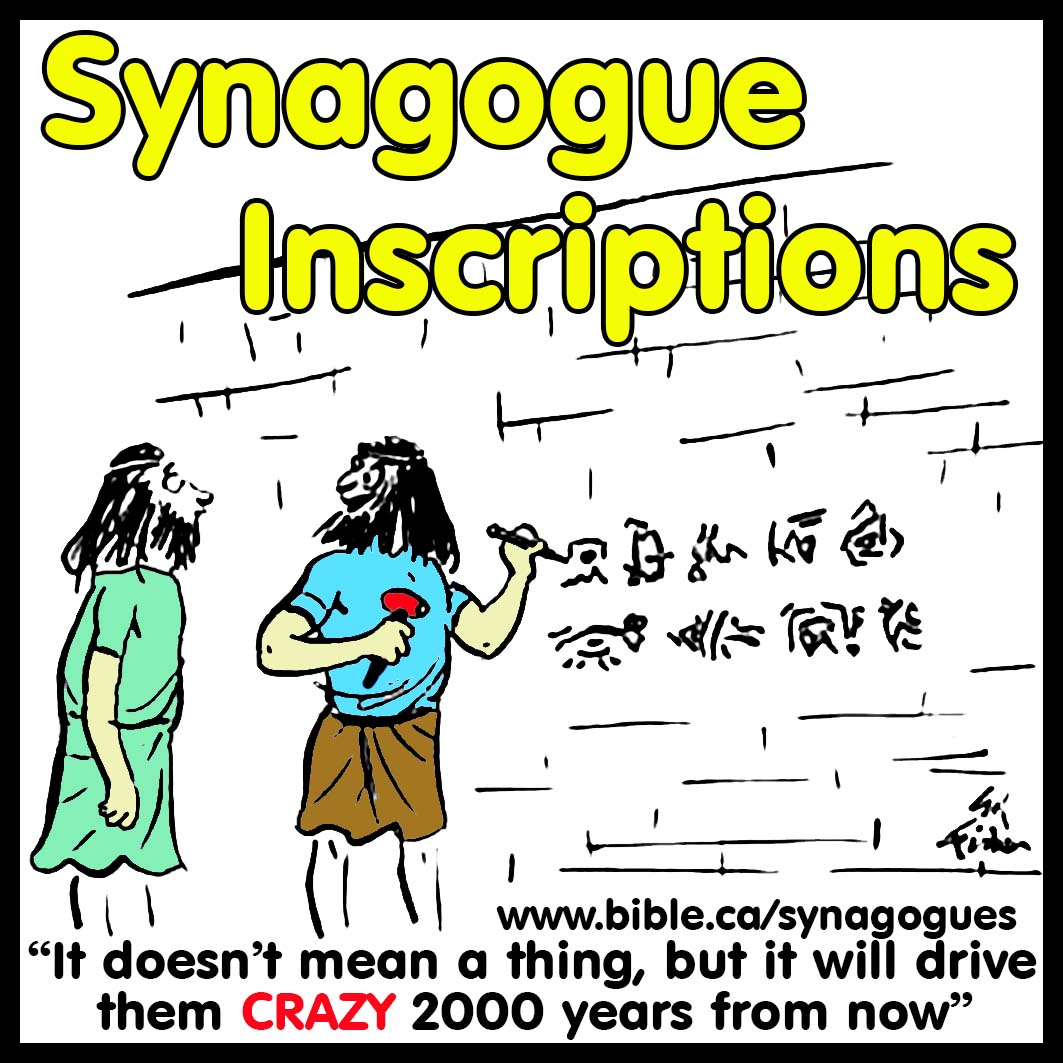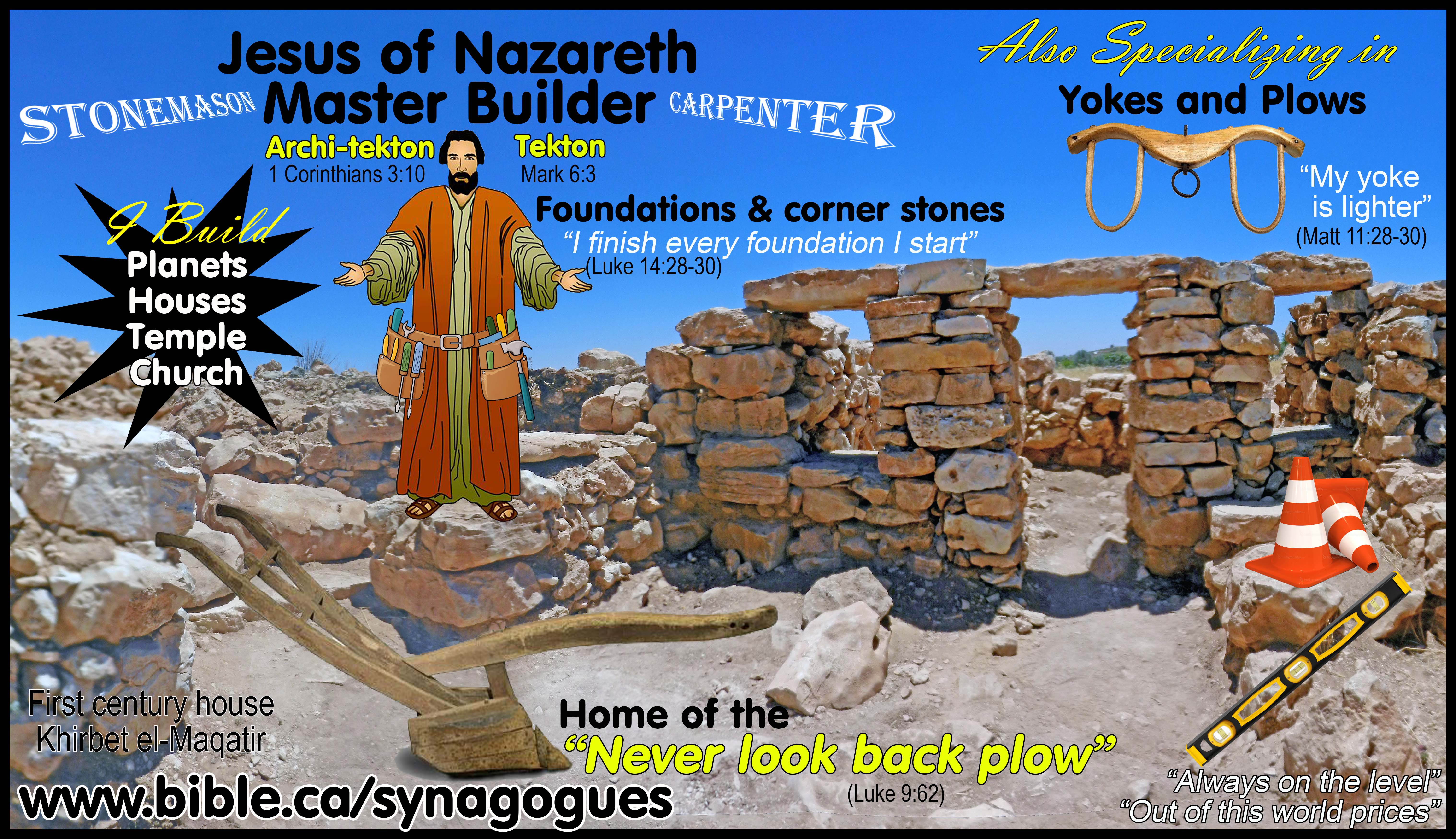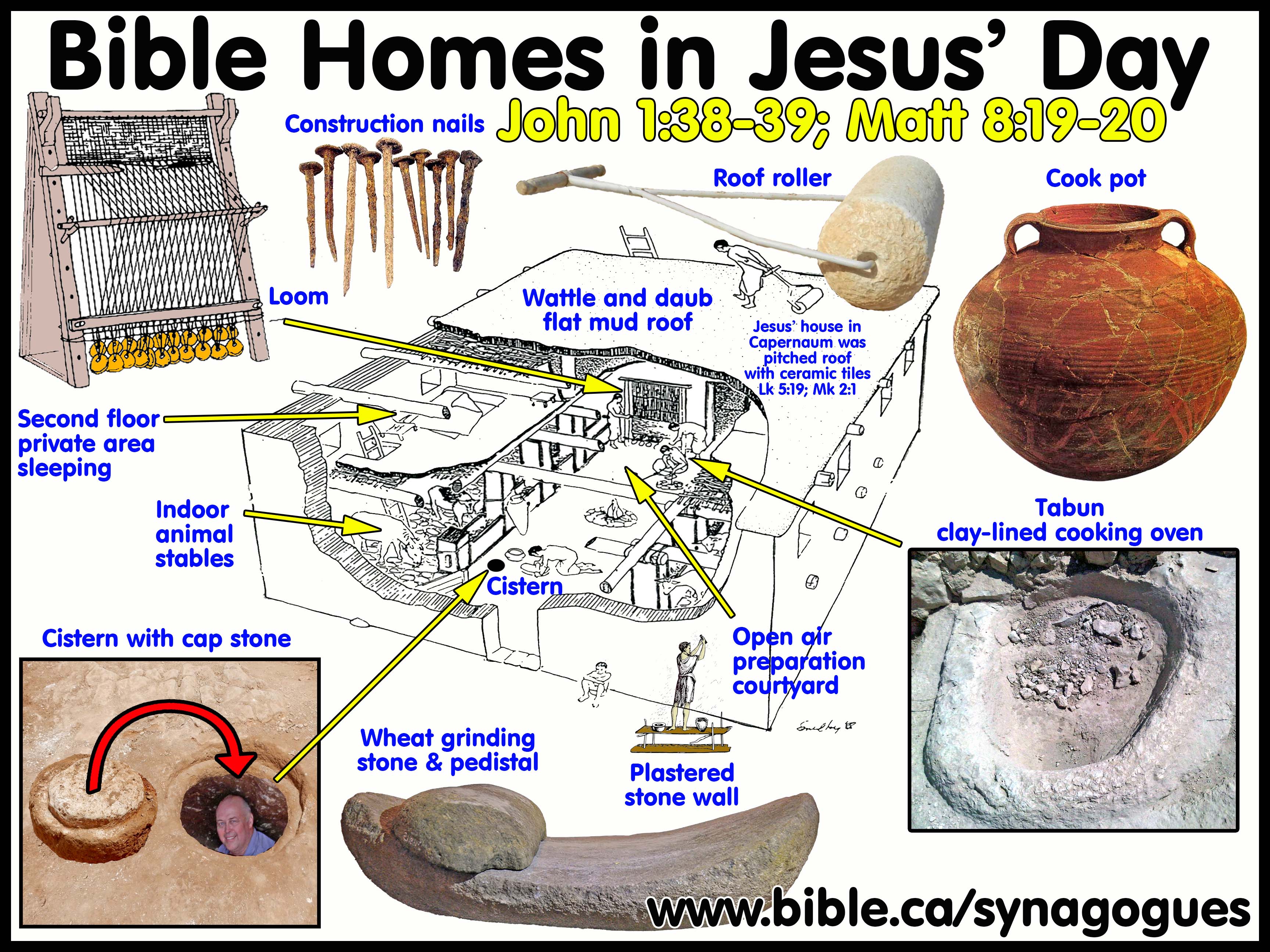|
SYNAGOGUE PROTOTYPE MASTER SUMMARY CHART Worship and Function The Synagogue as the Prototype of the Church |
“On this Rock, I will build My church”
Ancient Synagogue Worship and the Church
Synagogue worship was the prototype for Christian Church.
|
The Synagogue was the prototype of the Christian Church for Worship and Function Prototype |
|||
|
|
Jerusalem Temple |
Synagogue |
Church |
|
Who controlled |
Sadducees: |
Not initially, but by 100
BC Pharisees took over control. |
Christians: Jew and Gentile |
|
Weekly attendance |
No (3 times a year) |
Yes: every Sabbath |
Yes: every first day, Sunday. Acts 20:7; 1 Cor 16:2 |
|
Government |
Levitical High priest Sole top authority (like Catholic Pope) |
Democracy: Body of equal rulers (Mark 5:22, 35-36, 38; Luke 8:41, 13:14) |
Democracy: plurality of equal elders/ bishops/ shepherds. 1 Tim 3; Tit 1 |
|
Clericalism |
Yes: Non-priests who entered the Holy Place were stoned. |
No: Any Jew could lead any event in the synagogue. |
No: Every Christian is a priest. Any man can preach, read, pray or officiate communion. |
|
Age of participation |
30 years for priests: Num 4. Ezek 1:1; John the Baptist and Jesus: Luke 3:23 |
Any pubescent boy |
Any baptized boy |
|
Independent and Autonomous |
Yes |
Yes |
Yes until 4th century when the diocese was invented. |
|
Animal sacrifices |
Yes |
No |
No |
|
Focal point |
Outward ritual of sacrifice & libation |
Inward devotion of Torah study & prayer |
Inward devotion of Bible study & prayer |
|
Physical “no go zones” for common Jews in building |
Yes |
No |
Not until the 4th century when the clergy/laity distinction was invented. |
|
Who can access the Torah inside the “Ark” (Bible). |
Only Priests can touch Ark of Covenant. |
Any Jew can access the Ark of Scrolls in the synagogue. |
All Christians have equal access to Bible in church. |
|
Instrumental Music in worship |
Yes |
No |
No. Until 1054 AD |
|
Who conducted public Bible readings in 30 AD |
Priest in Hebrew which no one understood because the masses spoke Aramaic and Greek. |
Any Jew in Greek which all understood |
Any Christian in Greek which all understood |
|
Language of Scripture |
Hebrew |
Greek Septuagint |
Greek Septuagint |
|
Physical worship |
Most sacrifices kept at distance from the people. |
All drew close to with spiritual events equally |
Everyone directly shares the most sacred blood and body in Communion |
|
Bible experts |
High Priest |
Pharisees |
Pulpit ministers, overseers |
|
Names |
temple [hieron] |
house of prayer [proseuche], Synagogue [synagōgē], Church [ekklesia], Temple, House |
Synagogue [synagōgē], Church [ekklesia], Temple, House |
|
Water of purification (Mode) |
Brass Laver (Sprinkling) |
Mikveh (immersion) |
Baptism (immersion) |
|
Water of purification (purpose) |
Brass Laver (remove sin) |
Mikveh (remove sin) |
Baptism: Acts 22:16 (Remove sin) |
|
Clothing after purification (clothed with garments of salvation) |
Garments of salvation: Priests special clothing. |
Mikveh: Isaiah 61:10 (wore white robe after immersion) |
Baptism (“Put on” Christ: Gal 3:26-27) |
|
Legal civil system |
Levitical priests |
Board of Elders |
Christians |
|
Worship liturgy |
Animal sacrifices, song, prayer, bread, incense, candles |
Holy bread, song, prayer, public reading of scripture, preaching, collections |
Break bread, song, prayer, public reading of scripture, preaching, collections |
|
Freestanding Columns |
Solomon’s two freestanding temple columns: (Jachin, Boaz) 1 Kings 7:21 |
The Herodium Synagogue had freestanding columns that were symbolic not structural |
Christians are the freestanding columns and the church is the pillar of truth. 1 Tim 3:15; Rev 3:12. The first church buildings had columns. |
|
Refugee sanctuary |
Yes “horns of altar” 1 Ki 1:50; 2:28 Cities of refuge. |
Yes: Refugee Asylum Sanctuary Status in Synagogues |
Yes: Refugee Asylum Sanctuary Status in Churches |
|
Sacred meals eaten |
Yes Passover |
Yes Passover |
Yes Communion |
|
Common meals eaten |
Yes (priests ate the leftover portion of sacrifices animals) |
No. |
No: Forbidden in |
|
Frequency of eating unleavened bread |
Mazzot: yearly |
Mazzot: yearly |
Communion: weekly |
|
Women segregated in worship |
YES. temple had a separate court for the women, as seen in the Wailing Wall today. |
No: women sat with husbands and children |
No: women sat with husbands and children |
|
Women reading, praying, teaching, leading worship |
No |
No: A woman is seductive (Talmud, b. Ber. 3:5, I.16.F) |
No: Flat forbidden 1 Tim 2:12 |
|
Schools |
No |
Every Synagogue was a school |
Every church is a school |
Introduction:
A. Five identifying features of New Testament Church and pre-70 AD Synagogues
1. Name:
a. Temple
b. Synagogue
c. Church
d. House
2. Organization:
a. Independent
b. Autonomous
c. Non-centralized
3. Government:
a. Presbytery + Deacons
b. Plurality of older, equal, qualified men
c. No one man had total control.
d. No women, preachers, leaders
e. Decisions made by mutual agreement of all the elders in each assembly.
4. Work:
a. Teach Bible
b. Benevolence for Jews/Christians only
5. Worship:
a. Women not segregated from men,
b. Read Bible, preach and teach
c. acapella Singing, non -instrumental
d. Prayer
e. Sacred meals (No common meals or pot lucks in the synagogue/church building)
f. Weekly freewill offerings
B. Temple worship vs. Synagogue worship and the church
1. Synagogue worship has zero Biblical authority for its existence and practice but I derived entirely from human and oral tradition
a. On almost every single specific of function and practice, synagogue and temple worship are opposite.
b. On almost every single specific of function and practice, synagogue and Church worship are the same.
2. Modern Rabbinic Judaism is as foreign from Biblical mosaic temple worship as the Roman Catholic church is foreign from New Testament Christianity.
a. Both Rabbinic Judaism and Catholicism have huge volumes of the exact type of man-made rules that Rabbi Jesus of Nazareth condemned.
b. The modern practice of Judaism places priority on manmade and inherently self-contradictory Talmudic writings over the Tanakh the same way that Jehovah’s witnesses priorize their Watchtower and Awake magazines over the New Testament. While both groups would deny they follow their man-made writings and creeds to the exclusion of the Bible, in functional practice it is absolutely true.
3. Current Jewish law is centrally embodied (but no exclusively) in the Babylonian Talmud which is about 16,530 pages (The earlier Jerusalem Talmud has 9,251 pages.)
a. Compare this with the entire old Testament (Tanakh: 39 books) at 1,100 pages.
b. Compare this with Torah at 200 pages.
c. This why Pharisee Apostle Paul warned: "It was for freedom that Christ set us free; therefore keep standing firm and do not be subject again to a yoke of slavery." (Galatians 5:1)
C. Biblical Mosaic Judaism of temple worship is dead and extinct today:
1. Restoration of Biblical Mosaic Judaism of temple worship is impossible:
a. Not a Jew alive today know which of the twelve tribes his ancestors once belonged.
b. The biggest barrier to the supposed “restoration of Mosaic Temple worship” is the lack of genealogy, without which, the essential identification of “Levites” to perform temple sacrifices, is impossible.
c. Identifying the tribe of sons of Aaron today would require special revelation from God. In other words, GOD WOULD SPEAK.
d. Remember that the Encyclopaedia of Judaism confirms that many Jews today are descendants of gentile proselytes (Khazars) with no historic connection to any Hebrew tribe.
e. “The vast dominion of the Khazars came under the rule of Judaism by the ninth century. The Khazars’ adoption of Judaism, once evidenced only by assorted references in the medieval writings of chroniclers, travelers, and commentators and by a few Hebrew documents authored by the Khazars themselves, is now gaining archaeological confirmation. Though it is widely believed that the Khazar leaders converted to Judaism to preserve Khazaria’s independence against its Muslim and Christian neighbors, the preexisting Jewish communities doubtless played a role in influencing their decision. The Life of Constantine, for instance, related how the Khazars were being urged by Jews and Arabs to adopt another religion around the year 860. Dimashqi similarly alleged that Jewish immigrants fleeing from the Byzantine Empire “offered them their religion.” However, legend has it that the Khazars did not fully adopt Judaism immediately. Instead, we are told that they held a debate between representatives of the major monotheistic religions and that the Khazar kings, after inquiring into the beliefs and origins of these competing faiths, deliberately and decisively chose Judaism.” (Khazars and Judaism, The Encyclopaedia of Judaism, Jacob Neusner, Vol 4, p1823, 2000 AD
f. The brown-eyed, olive-skinned Jews and Araba living in Israel today are more likely to be Abraham’s physical descendants than the light-skinned, blue eyed Jews.
2. Messianic Jews and Christian premillennialists expect that Christ himself will sort the whole mess out at His second coming.
a. But if it was impossible for animal sacrifices to forgive sins (Hebrews 10:4,11) AND if Christ died once for all for sins (Heb 10:12), WHY RESTORE ANIMAL SACRIFICES?
b. Premillennialism is pure rank heresy. The next event is the last event: THE END: Second coming, uncreation of the universe, great judgement, hell, heaven in Jew spiritual Jerusalem in God’s presence.
c. Paul says Premillennialism who teach such have “fallen from grace and been severed form Christ”: Galatians 5:4
3. The religion practiced by Jews today in their synagogues resemble the New Testament churches not Temple worship.
D. At the time of Christ, Judaism had acquired a very “independent local church” feel.
1. Synagogues have a very “churchy feel” with emphasis on personal faith as opposed to “Temple worship” with emphasis on outward ritual.
a. Even when Herod the Great built a new Jewish temple in Jerusalem in 18 BC, the heart beat of Judaism lay among the thousands of synagogues where Jews would meet every Sabbath for simple devotional prayer and Bible reading as a pre-echo of a typical church service.
b. The temple was marginalized as just one among thousands of Synagogues.
2. The Jerusalem temple Sadducees vs. Synagogue Pharisees:
a. The Sadducees controlled the Jerusalem Temple:
i. The High priest was a Sadducee: "But the high priest rose up, along with all his associates (that is the sect of the Sadducees), and they were filled with jealousy." (Acts 5:17)
ii. The Hebrew speaking “Jerusalem Temple Elites” known as “Sadducees”, continued to control the Jerusalem temple based upon genealogy and bloodlines and were the only one’s who were fluent in native Hebrew language and script.
iii. It is noteworthy that Paul never encountered Sadducees in any of his missionary journeys outside Judea. In fact Sadducees are never found to be associated in any story that involved a synagogue!
b. Pharisees controlled the Synagogues:
i. It is important to note that the earliest synagogues were not controlled by the Pharisees.
ii. “Woe to you Pharisees! For you love the chief seats in the synagogues” (Luke 11:43)
iii. Pharisees had the heart of the people through the weekly Sabbath prayer meetings in the many synagogues.
iv. "Nevertheless many even of the rulers believed in Him, but because of the Pharisees they were not confessing Him, for fear that they would be put out of the synagogue;" (John 12:42)
4. Synagogues read the Bible and prayed without animal sacrifices. In a synagogue, every man was a “priest” without any “clergy laity” distinction. Unlike Temple worship with its High Priest, every man in a synagogue was equally qualified to lead, conduct and participate any or all of the services or ritual.
E. Synagogues provided both Jews and Christians with a template for their religion:
1. Synagogue worship was adopted by the early church:
a. The initial place of worship for the Christians was the Jerusalem temple and the Portico of Solomon:
b. However Christians would also populate the hundreds of synagogues known to exist in Jerusalem in 33 AD.
c. Then when the great Christian diaspora occurred in 39 AD with the persecutions of Paul, and later Nero in 66 AD, Christians used synagogue worship as their template in their first day of the week assemblies to break bread, sing, pray, preach and take collections.
2. Synagogues as an established institution since 100 BC also provided the Jews who rejected their messiah an immediate alternative to the Jerusalem Temple, and has been so to the present time.
a. Even today, a Jewish Sabbath service in a synagogue and a Christian Sunday service are remarkably similar in rote and liturgy.
b. Both synagogues and churches have five basic elements of worship: break bread (holy meals), sing, pray, preach and take weekly collections.
3. The Church and Synagogue were similar in both physical form (building) and spiritual function (worship liturgy).
a. “It follows that the nearest contemporary analogy to the church meeting was provided by the synagogue and not by the temple. This is a more significant fact than is often recognized. The environment … [within which] Christianity [began] in the hellenistic world was … [a non-Christian environment] of pagan worship conducted in temples and shrines, but there is no evidence that the Christians modelled their gatherings on temple worship. It appears rather that their inspiration was, as might have been expected, thoroughly and basically Jewish, and that the inspiration came from the synagogue.” (How far did the early Christians worship God?, Howard Marshall, The Churchman: Volume 99, Nos. 1–4, p216, 1985 AD)
b. “There can be no doubt that the appearance of the synagogue centuries earlier had been of cardinal significance in the development of Judaism. The synagogue universalized official Jewish ritual practice while democratizing worship by taking it out of priestly hands. Thus the way was opened for any Jew anywhere to participate and officiate in the recognized communal ritual. Moreover, the synagogue radically changed the content of this ritual, shifting the focus from sacrifice and libation to Torah study and prayer. Finally, the synagogue welcomed within its confines the presence of the congregation as a whole, unlike the Temple where people were kept at a distance, often far removed from the scene of the ritual.” (The Synagogue in Late Antiquity, Lee Levine, p7, 1987 AD)
F. Most of the functions of synagogues were replicated in the church:
1. Synagogues had a wide range of used:
a. “Assembly hall and town hall for the local Jewish congregation: As such, the synagogue served as a centre for community fund-raising, charitable collections, congregational affairs, and as a type of court of public interests (S. Safrai 1976:942). Levine (2000:19-41, 124-159; 2004:27-30) contends that "the synagogue of this period was primarily a communal institution serving the many and varied needs—including the religious ones—of the local community". These services included: social and political gatherings, religious instruction, Torah reading and prayer, collecting monies for the Temple and for local needs, communal meals, a hostel, as well as a local archive. Hostels are mentioned in rabbinic literature (Z. Safrai 1995:190-191). Adjoining institutions: These included schools and annexes with hostels, guest houses, and residences for synagogue officials. Sometimes ritual baths (miqvaoth) or water sources were built close by (see cistern or miqweh—at Barcam, Beth Shearim, Eshtemoca, Horvat Shenfa, Macon-Nirim, Macon Judea, Meiron, Na'aran, Susiya). At the New Moon or the end of the Sabbath, the synagogue or an adjacent room served as a dining room. Other civic activities and functions conducted in the synagogue: These included the courts and political assemblies, possibly treasuries, and the preservation of documents in a geniza. The court operated in the synagogue, originally as a local court and later, from the Amoraic period [200-500 AD], as a rabbinic court (Z. Safrai 1995:187-190). Levine (2000:370-372) maintains that the synagogue was used as a communal court and a place for administrating punishment and the manumission of slaves (see the Crimea inscriptions). The synagogue was also the usual location for the town officials. "The synagogue served as the office for the community administration" (Z. Safrai 1995:194-198).” (Ancient Synagogues - Archaeology and Art: New Discoveries and Current Research, Rachel Hachlili, p17, 2013 AD)
2. The church you can read about in the Bible used the synagogue as prototype to adopt most of these functions:
a. Church civic town hall meetings: Acts 6 and the neglected widows.
b. Food bank for needy widows: 1 Tim 5
c. General housing and Hostels for travellers: The “manse” is wholly “church-owned” an adjoining building funded out of the church treasury for the preacher’s family and any out of town guests who visit.
d. Civic Court to settle internal non-religious disputes over money matters etc. and decree punishments that fit the crime that range from restitution to floggings: 1 Cor 6
e. Eating of sacred communal meals: Lord’s Supper (unleavened grape juice, unleavened bread)
f. Public treasuries from weekly freewill donations: 1 Cor 16:1-2
g. Schools for religious education are in every church today: Adult class and classes for all ages of children are provided. Also specific mid-week “preacher training colleges with free tuition are run in many churches.
h. Asylum and sanctuary status exists even today in law for all the churches of Christ, even if they are unwilling to take advantage of this 2300 year old tradition granted to synagogues by Antiochus III and renewed countless times up to Roman times.
i. Administrative offices are located in most church buildings including a preacher’s office and separate secretarial offices for general administration.
j. Specific and separate storage area for scripture and important church related documents.
k. The church Baptistry followed the pattern that every synagogue had a mikveh.
G. Snapshot of synagogue worship liturgy: 39 AD
1. The decree of Flaccus in 39 AD mirrored Nazi Germany when the Jews were made aliens and their property was confiscated.
a. Notice the words in Philo Embassy/Flaccum 121-124
b. “being driven out by men and robbed of everything else in the world, and being deprived of our city, and of all the buildings both private and public within the city, and being made houseless and homeless by the treachery of our governor [Flaccus/Hitler]” (Philo Embassy/Flaccum 121-124)
c. This has happened to the Jews many times in the past in the Assyrian Captivity of the ten lost tribes in 723 BC, the Babylonian captivity of 605-536 BC, at the time of Esther and Antiochus IV.
d. It will happen again but on a much larger scale in 70 AD under Titus and 135 AD under Hadrian.
2. Caligula executes Flaccus for violating the Jews: (Embassy/Flaccum 121-124)
a. Comment on Embassy/Flaccum 121-124: “In autumn of 39 C.E., the Roman emperor Caligula sent troops to Alexandria and arrested Flaccus during the feast of Sukkoth (see Flacc 104-118). He was executed in the spring of 39 C.E. In §§119-124 the Jews thank God for this sudden intervention. §§121-122 have been taken as a witness to hymns and songs in the Egyptian synagogues. Deprived of the synagogues they had to use the beach.” (The Ancient Synagogue from its Origins to 200 AD, Anders Runesson, comment on Embassy/Flaccum 121-124, 40-41 AD, p181, 2008 AD)
b. When the Jews learn that their embassy to Rome was successful and Caligula executed Flaccus, the Jewish community in Alexandria spent all night singing and praising God.
3. Text of Philo, Embassy/Flaccum 121-124: “And when they heard of the arrest that had taken place, and that Flaccus was now within the toils, stretching up their hands to heaven, they sang a hymn, and began a song of praise to God, who presides over all the affairs of men, saying, “We are not delighted, O Master, at the punishment of our enemy, being taught by the sacred laws to submit to all the vicissitudes of human life, but we justly give thanks to thee, who hast had mercy and compassion upon us, and who hast thus relieved our continual and incessant oppressions.” (122) And when they had spent the whole night in hymns and songs, they poured out through the gates at the earliest dawn, and hastened to the nearest point of the shore, for they had been deprived of their usual places for prayer, and standing in a clear and open space, they cried out, (123) “O most mighty King of all mortal and immortal beings, we have come to offer thanks unto thee, to invoke earth and sea, and the air and the heaven, and all the parts of the universe, and the whole world in which alone we dwell, being driven out by men and robbed of everything else in the world, and being deprived of our city, and of all the buildings both private and public within the city, and being made houseless and homeless by the treachery of our governor, the only men in the world who are so treated. (124) You suggest to us favourable hopes of the setting straight of what is left to us, beginning to consent to our prayers, inasmuch as you have on a sudden thrown down the common enemy of our nation, the author and cause of all our calamities, exulting in pride, and trusting that he would gain credit by such means, before he was removed to a distance from us, in order that those who were evilly afflicted might not feel their joy impaired by learning it only by report, but you have chastised him while he was so near, almost as we may say before the eyes of those whom he oppressed, in order to give us a more distinct perception of the end which has fallen upon him in a short time beyond our hopes.” (Philo, Embassy/Flaccum 121-124, Alexandria, 40-41 AD)
4. Notice the worship Liturgy that Philo records that is typical of what would happen in every synagogue around the time of Paul’s first missionary Journey:
a. Raised their hands up to God
b. Sang hymns of praise to God
c. Thanked God
d. They prayed to God
e. The worship lasted all night
5. It sounds exactly like what you would expect to experience in any church!
By Steve Rudd 2017: Contact the author for comments, input or corrections
|
Jesus your messiah is waiting for you to come home! |
|
|
Why not worship with a first century New Testament church near you, that has the same look and feel as the Jewish Synagogue in your own home town. As a Jew, you will find the transition as easy today as it was for the tens of thousands of your forefathers living in Jerusalem 2000 years ago when they believed in Jesus the Nazarene (the branch) as their messiah. It’s time to come home! |
|
By Steve Rudd: Contact the author for comments, input or corrections.
Go to: Main Ancient Synagogue Start Page












